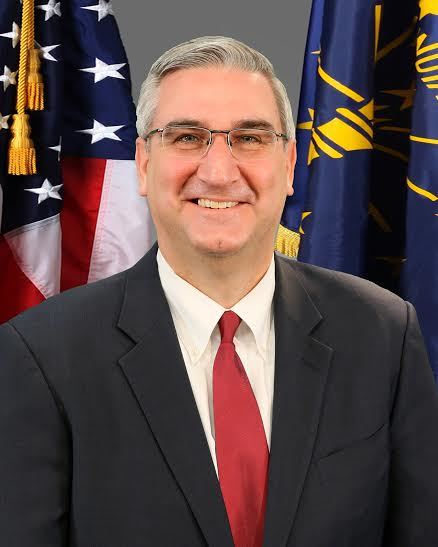 Governor Eric Holcomb announced the 12 members of the Governors' Public Health Commission to examine the state's public health system and strengthen the health infrastructure. Some of the goals of this 15-member commission are to make recommendations to improve structure, funding, and operations. Other subgroups will examine the delivery of services, collection, and use of data. A $250,000 grant was awarded by the Richard M. Fairbanks Foundation to support the commission’s work.
Co-chair members include Dr. Judy Monroe, who serves as the president and chief executive officer of the CDC Foundation, and former State Senator Luke Kenley. The state’s current health commissioner will be the secretary.
The commissions newly appointed members are:
- Mark Bardsley, Grant County Commissioner, of Marion
- Marion County Health Officer Virginia Caine, MD, of Indianapolis
- Mayor Bob Courtney of Madison
- Dennis Dawes, Hendricks County Commissioner, of Brownsburg
- Carl Ellison, president and CEO of the Indiana Minority Health Coalition, of Indianapolis
- Paul Halverson, DrPH, FACHE, founding dean of the Richard M. Fairbanks School of Public Health, of Indianapolis
- Kim Irwin, administrator of the Indiana Public Health Association
- Hannah Maxey, PhD, MPH, RDH, of Fishers, director of the Bowen Center for Health Workforce Research & Policy at the IU School of Medicine, of Indianapolis
- Brian Tabor, president of the Indiana Hospital Association, of Indianapolis
- Cara Veale, DHS, OTR, FACHE, CEO of the Indiana Rural Health Association of Washington
- Mindy Waldron, Allen County Health Department administrator, of Fort Wayne
- David Welsh, MD, Ripley County Health Officer, of Versailles
The commission had its first meeting in September and will provide recommendations to the Indiana General Assembly within a year. A video of the initial meeting and copies of the presentations are posted at www.in.gov/gphc.
The commission’s next meeting will be held from 1 to 3 p.m. on Thursday, Oct. 21, at the Indiana Government Center South, 302 W. Washington St., Indianapolis, IN. Proceedings will be livestreamed and available online.
Learn more about the initial Commission meeting.
 Opioids can be beneficial in short-term pain management but, when misused, can be highly addictive. About 232,000 Americans between 1999 to 2018 have died from opioid prescription overdose. An opiate is a naturally occurring drug from the opium poppy plant; synthetic versions are also created in laboratories. An opiate relieves pain by blocking signals sent from the brain to the body. Some examples of opioids are hydrocodone, oxycodone, methadone, fentanyl and heroin. Opioids will build a tolerance making the drug less effective, creating the desire and need to take a higher dose. Therefore, long-term use of opioids is dangerous and can lead to dependency. Other risks related to opioid use include depression, respiratory depression, hallucinations, nausea, and liver and kidney problems.
Anyone who is prescribed an opiate should understand all the risks involved. Some proper use of opioids includes:
- Not mixing with alcohol
- Informing the doctor of any prescribed medications
- Ensuring they are being prescribed only for short-term pain management.
Furthermore, prescriptions should be taken precisely as the instructions indicate and more should not be taken if the pain has not been alleviated; in that case, consult a doctor.
Anyone who has had issues with opioids in the past, must be honest with the doctor and inform him/her of that history with opioids. Create a pain management plan with the doctor to discuss different pain management options such as acetaminophen, corticosteroids, antidepressants, and nonsteroidal anti-inflammatory drugs (NSAIDs).
It is essential to identify opioid abuse disorder warning signs and remember that it can happen, even if the opioids are legally prescribed. Some signs may include weight fluctuations due to change in appetite, financial irresponsibility such as not paying bills or stealing from friends and family, social isolation because of shame and the desire to be alone, drowsiness, decreased libido, and altered sleeping habits such as staying awake for hours. Contact the Substance Abuse and Mental Health Service Administration's National Helpline if you recognize any of these signs with yourself or someone you know.
Surgery can be a difficult time For individuals in recovery from opioid use disorder (OUD). Those taking buprenorphine, a narcotic utilized to treat opioid dependence, are directed to stop taking the medication before surgery. This action may make the road to recovery harder for patients with OUD. The American Society of Regional Anesthesia and Pain Medicine, along with other societies such as the American Academy of Pain Medicine, has developed new guidelines to help treat OUD patients during surgery. Evidence supports the use of buprenorphine up until the time of surgery for patients being treated with OUD. Discontinuing buprenorphine and then introducing oxycodone and similar narcotics to treat post-surgery pain can lead OUD patients to relapse. Data show that death rates for OUD patients are highest during the first month of discharge from a hospital. Anesthesiologists and pain physicians need to understand their essential role during OUD patients' recovery.
 Patrizia Cavazzoni, U.S. Food and Drug Administration (FDA) director of the Center for Drug Evaluation and Research, emphasizes the concern about overprescribing opioids to vulnerable populations. Public and private entities have independently implemented education programs about safe opioid prescription practices, but these differ, lacking uniformity among all stakeholders. The FDA created a two-day workshop, Reconsidering Mandatory Opioid Prescriber Education Through a Risk Evaluation and Mitigation Strategy (REMS) in an Evolving Opioid Crisis, to create the opportunity for stakeholders to provide input on the opioid crisis and issues that could be measurably mitigated. The discussion of a mandatory prescriber education program will also be a topic in this webinar, with potential future webinars focusing specifically on that topic.
The public workshop from 1 p.m. to 5 p.m. Oct. 13, will benefit healthcare providers, pharmacists, public and private insurers, patient organizations, federal and state agencies, and the public.
Click here to learn more.
Looking for drug overdose data? State and county level data relating to drug overdose deaths, nonfatal overdoses, opioid prescribing and much more can be found on the Drug Overdose Dashboard. Additional overdose data can be found on StatsExplorer. Please reach out to the DOP team to ask data questions.
|